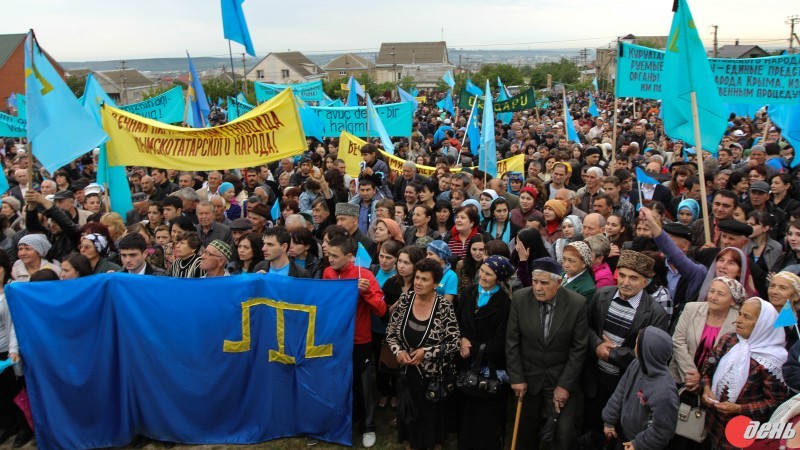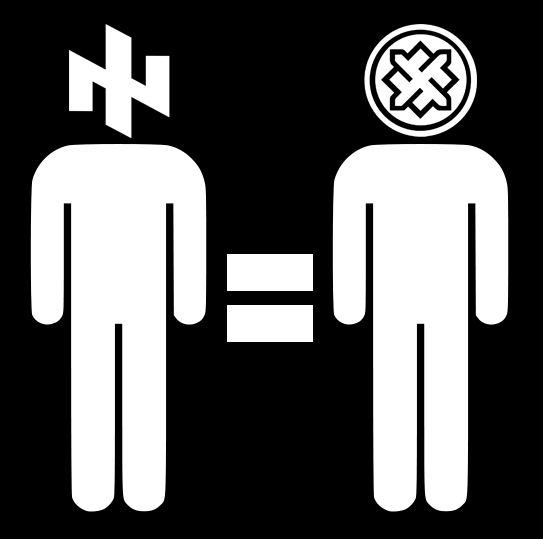This guest post, outlining the current political situation in Ukraine, is by DENIS from the Autonomous Workers Union of Ukraine. It is based on a talk he gave at the Anarchist Book Fair in London on 18 October
In terms of class theory, the Maidan protests [that overthrew president Viktor Yanukovych in February] can be defined as a bourgeois democratic movement. aiming at restoring the liberal political and individual rights and freedoms and defending the interests of the bourgeoisie which had been threatened by president Yanukovych. This movement ousted Yanukovych and brought to power a right liberal bourgeois government.
There was a threat of the far right seizing power in Ukraine, in the short period of a power vacuum [after the Yanukovych regime collapsed] but they failed to seize the chance. Today they are acting rather as junior partners of the government, at the same time trying to compete with it where possible.
The elections results and polls show that people broadly support (1) moderation, stability and patriotism (which is personified by [the new] president, Petro Poroshenko); and (2) pseudo-radical populism (epitomised by Oleg Liashko [leader of the populist Radical Party in the Ukrainian parliament]). The far right can not secure enough votes to get into the parliament; judging by opinion polls, Svoboda, the one parliamentary party that could be called fascist – or at least right populist – may fail to get enough votes to stay in parliament after the elections on 26 October. In order to get political power they have to squeeze their representatives in other, more popular, centrist election lists.
Ukrainian nationalism and fascism
Contrary to the widespread concerns, nationalist sentiment has not become widespread in the society immediately after Maidan (although the nationalists, unlike leftists, had everything at their disposal to push their agenda at Maidan). But nationalism indeed became the dominating ideology in Ukrainian society after the Russian aggression started [with the annexation of Crimea in March] and escalated: it was a sad but inevitable consequence.
In a more long-term retrospective, the agents most responsible for popularising radical nationalism in Ukraine over the last four years have been media and the intelligentsia generally. It is they who are responsible for the electoral success of Svoboda in 2012, when it received 10.4% of the vote. (Also, the then ruling Party of Regions was obviously trying to boost Svoboda as a harmless opposition). It is the media and the intelligentsia who now continue active support of the Right Sector (RS) and outright Nazis from the Social National Assembly (SNA), artificially inflating their approval ratings.
The SNA has engulfed and digested all the active far right forces which had been previously accumulated under the umbrella of RS, or is in the process of doing so. They are gaining the political momentum which had been lost by RS after it had to transform itself into a regular civil political party in the spring. They are a great threat for the left and for minorities, but they are unable to gain power. (Far right violence against the left started growing in 2012 – not in 2014 as is commonly believed – but right now there’s actually a certain pause.) We could compare the current situation with Italy, or other countries that have a tradition of an alliance between nazis and the police.
One of the military units fighting on the pro-Ukrainian side, the Azov battalion, is indeed fully neo-nazi. Also, the far right are present to some extent in other volunteer battalions, but they don’t play any significant role there. Most of the volunteers are regular people, only recently politicised and having rather abstract patriotic political views. Also, the regular army units fighting in the east of Ukraine are far more numerous than volunteers, who just have much better publicity.
The military conflict and the truce
In Kyiv the government exploits patriotic hysteria, and potentially could use fascists for reaching its political goals in the future. But the “people’s republics” in Donetsk and Luhansk have actual fascist movements in power with fascist ideology – even though they use the image of Lenin and red flags.
The unstable truce and “special status” of Donbass guaranteed by recent agreements allows those fascist political entities to gain strength and survive. Nevertheless, it is better than continuing the fighting without any hope for a quick end. This was the best of all the bad possible choices. It allows the far right on both sides political room, while the left agenda is being pushed even further away.
Ukraine’s neo-liberal government
The neo-liberal slogans and threats we have seen from Ukrainian government for the last six months don’t differ much from the traditional rhetoric of any Ukrainian government for the last decade. The first few months of Yanukovych’s rule, for example, were also full of such declarations, but then neoliberals in the ruling camp lost to the more populist conservative wing.
The austerity measures already taken by the current government would have anyway inevitably been taken by Yanukovych after his victory at the presidential elections in 2015: this was a universally acknowledged forecast, long before the Maidan protests. So far we cannot say whether the current government will be more neo-liberal than its predecessors in practice. Of course they want to, but it’s not clear whether they will have objective possibilities for this.
In November people will get utility bills with new, raised tariffs. They will also suffer from the further deepening of economic crisis, and the real incomes of the working class will fall further. But we shouldn’t count on a “social Maidan” this winter. It is impossible – because of the extremely high level of patriotic hysteria, on the one hand, and the extremely low level of development of social movements and political organisation of the working class, on the other hand. In the late spring we saw encouraging events such as the miners’ protests in Kriviy Rig, but so far they are anecdotal cases. Generally, the proletariat is silent.
The left in Ukraine and internationally
The Ukrainian left is weak and small. There are “post-Trotskyists” from the Left Opposition who are now engaged in fruitless attempts at building another broad left party, using Maidan as a base. There are syndicalists from the Autonomous Workers’ Union who were not present at Maidan organisationally, but issued “critical support” of Maidan in January and are now trying to find a political strategy which would be adequate to the new realities. There are “left rightists” from Autonomous Resistance who have attracted fans of riot porn and actions for the sake of actions – and are now taking part in the war on the side of the Ukrainian government. And there are Stalinists from Borotba who have been isolated and are boycotted by all other leftists in Ukraine, but are very popular among Western leftists.
What kind of support do we seek from foreign comrades? First of all, please spare some time on trying to understand the situation in Ukraine and don’t support the pseudo-antifascist fans of actually fascist “people’s republics” in Donbass.
Second, in your respective countries you can put forward a positive program of solidarity with Ukraine: debt write-off and extensive financial support from the EU, conditional on the leftist reformist agenda (contrary to the current help from the IMF, which is conditional on the anti-labour austerity measures).
Finally, it’s very important to criticise the Ukrainian far right, which is gaining much political ground in the current political atmosphere – only it has to be done correctly, without hysteric declarations about an [imaginary] “fascist junta” [in government] which actually serve the opposite purpose. People see that if this is fascism, then probably there’s nothing wrong with it.





One Comment on “Ukraine: truce the least bad option, but it gave space to fascists on all sides”